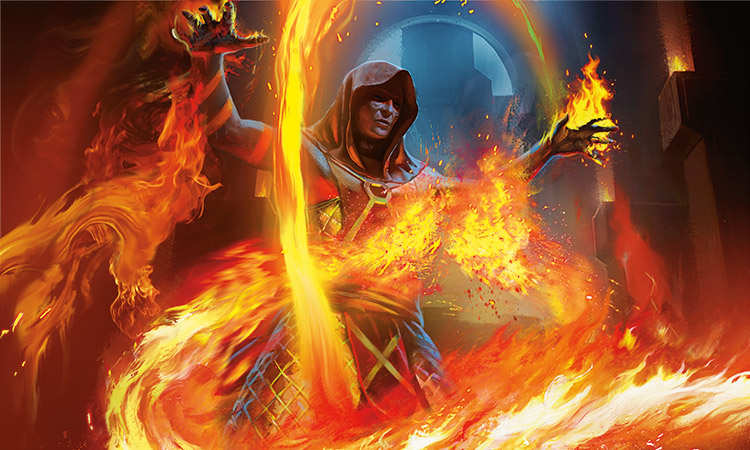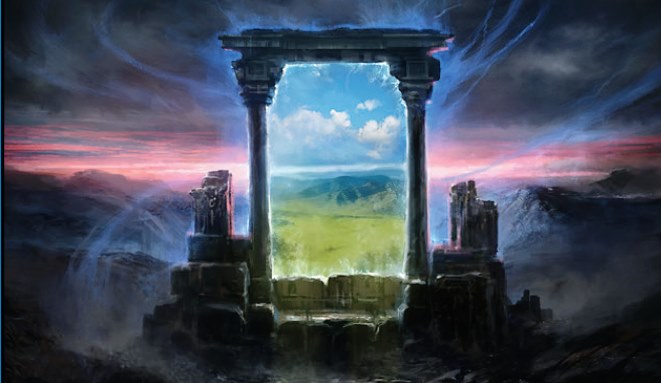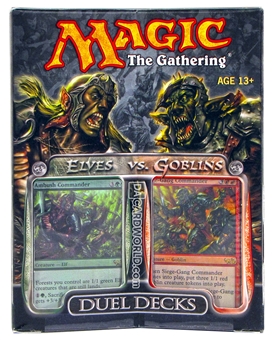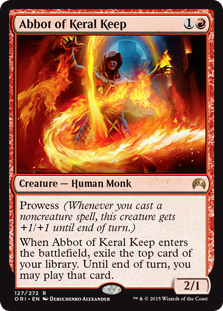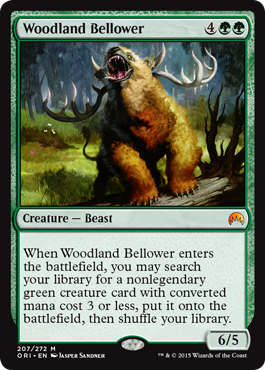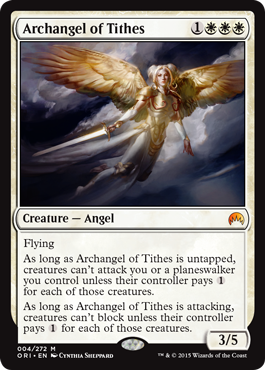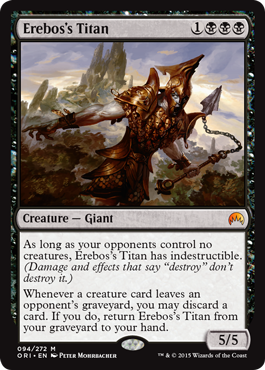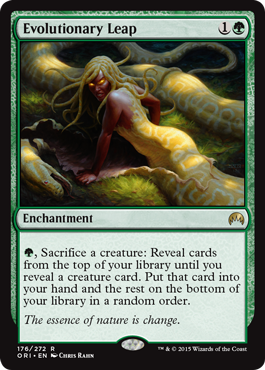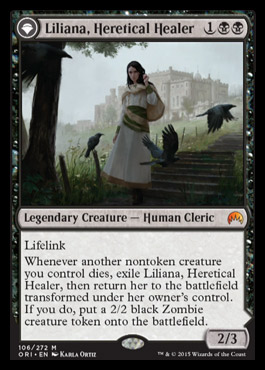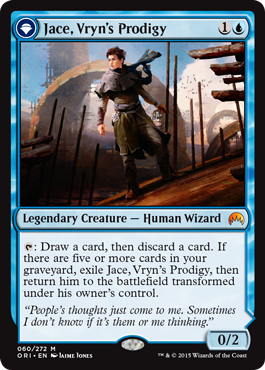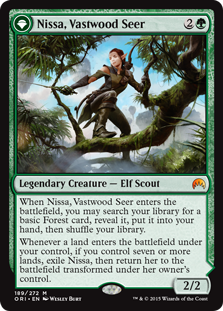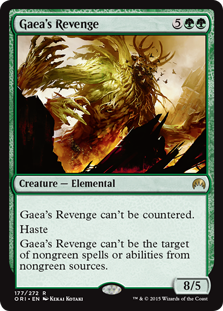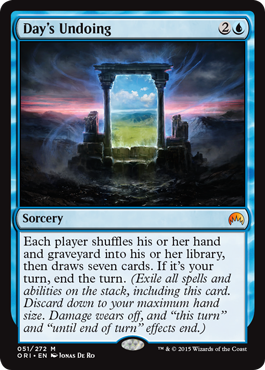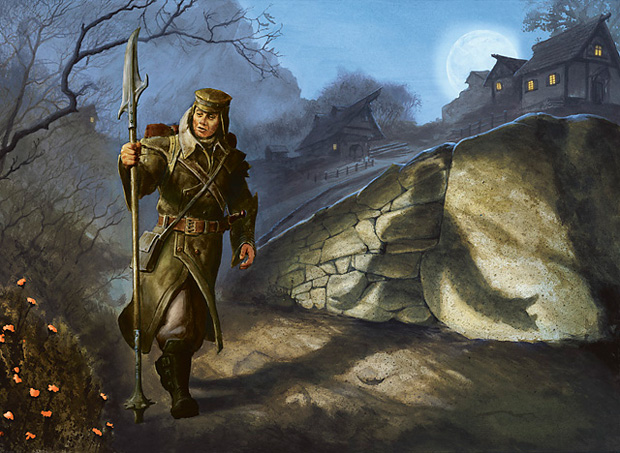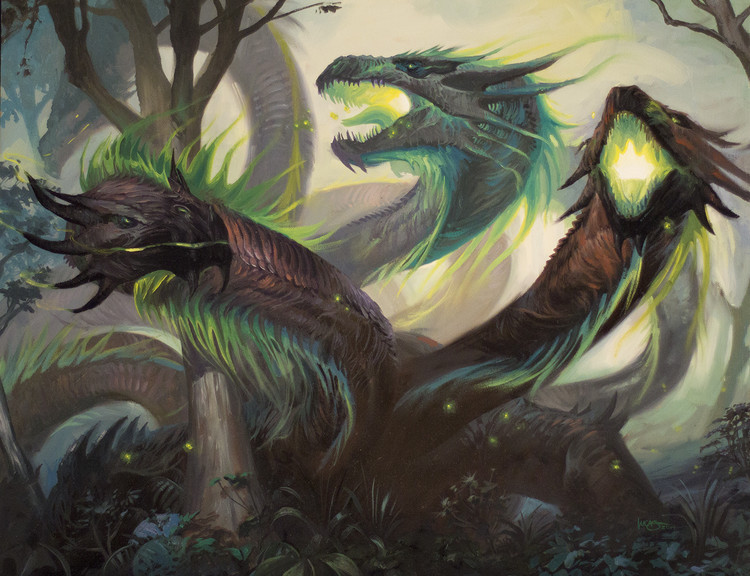By: Travis Allen
Financially oriented websites are an odd duck in the ocean of content production that is the internet. Those whose business models are to make you money exist in this tenuous balance of profitability; on the one hand is yours, on the other, theirs.
Production Values
StarCityGames.com makes sense as a content producer. Articles are written regarding competitive strategy, mulligan decisions, and deck-building tips. You pay money to learn how to be better at the game. Similar arrangements exist for nearly any topic under the sun. One can read about scrap booking or crocheting or bee husbandry or south Asian cricket teams or whatever it is that one fancies.
Content about making money is where things become murky. Articles on SCG designed to make you a better player aren’t directly disadvantageous for the writers. Few people that wouldn’t have beaten Tom Ross before reading his articles will beat him now. It’s in his best interest that there be a wealth of robust players anyways, as a healthy competitive scene will ensure that there’s plenty of fish out there. Websites whose content is about making you a better player, rather than about making you money, have more obfuscatory processes between a writer creating content and ultimately being less successful because of it.
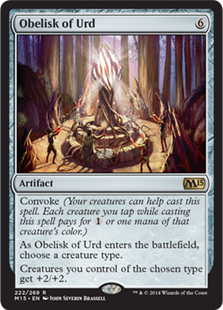
If I teach you how to mulligan better, it’s extremely unlikely that it will come back to bite me in the ass in a meaningful setting. If I teach you to buy piles of Obelisk of Urd, there’s going to be a lot fewer cheap copies available on TCGplayer for me, which means I can quite easily see how my advice is actively costing me money.
Content creators for websites that teach you how to make money, whether it’s Magic cards or Monsanto stock, deal with this issue. The more information I give you about how to succeed in the same market I’m in, the less overall money there is for me. A true #mtgfinance warrior wants to write nothing and tweet nothing. Knowledge is power, and power is money, so transitively, knowledge is money. Why would you want to share knowledge if it means someone else is buying your 25-cent copies of Hangarback Walker?
It’s a question of how we each assign value. Teaching you all how to spot cards that are worth scooping up may mean that there are fewer copies available when I decide to do it, and consequently I make less money because of what I wrote, but it provides value in a different vein. Rather than operate in the shadows, making 10 percent more than I would have otherwise, I get to be a public face in this niche field of a niche hobby. I have 1,300 Twitter followers, strangers occasionally approach me at Grands Prix, and thousands of people read my articles. All of that makes me feel like I’m doing something that at least a few people out there enjoy. 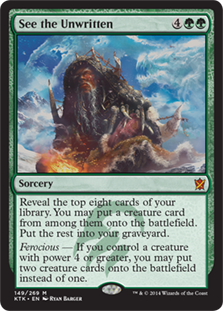
“You’re just doing this to feed your ego!” you may say, and you’d be quite correct. We all need our own ways of making ourselves feel better about being us, and if my way of doing that is sacrificing some amount of personal financial gain for a shred of visibility, then so be it. Any writer who shares information that they could otherwise be using to profit themselves is doing the same thing.
Of course, each of us has to find our own personal threshold between money and fame. I can talk about slumming the ban list as a means of finding undervalued cards that will skyrocket in value because I don’t expect there to be enough of a drain on that particular inventory set that it will prevent me from doing the same. Maybe I’m only able to pick up four sets of Bloodbraid Elf instead of six. On the other hand, I made sure not to talk about Chord of Calling or See the Unwritten before I purchased stacks for myself, and I didn’t tweet about Rally the Ancestors until I had grabbed several sets of that either. All of us writers are willing to share our processes about making money, even if it costs us in the long run—up to a point.
A Well-Kept Secret
If you had a personal relationship with certain writers or dealers two or three months back, you may have noticed a hole in the overall coverage landscape of Magic finance. A lot of us had, in our own ways, stumbled upon a fairly lucrative process. We were all keeping quiet about it, willing to share it with friends and insiders, but we weren’t ready to broadcast it to the masses. This was still a little too good to share; not yet would the personal validation be enough to out-value the money.
Of course, one kid in class has to point out to the teacher that the multiplication table on the wall is still visible during the math quiz. A few weeks ago, for the first time since I started writing about Magic finance, I found myself slightly agitated with an article a peer had written. Being tipped off by a comment on Twitter, I looked up Sigmund’s article that was set to be published in twelve hours. I told him there was a reason none of us had written that article already. We weren’t quite ready to let more people into this specific treehouse yet, and here he was kicking down the ladder.
You can sheer a sheep many times, but you can only skin it once.
Gone Shoppin’
Rather than attempt to recap Sig’s article, just go read it if you haven’t already. I’m instead going to pivot to discuss some of my own experiences with this topic, eventually getting to some actual useful piece of information. You’re going to have to earn it this week.
I was fortunate enough to have an opportunity to visit Japan early this year, and I didn’t miss the chance to stock on up Magic product. About $3,000 worth of cards came back with me. When I wrote about it, I attempted to create something with even just a modicum more depth than my usual fare. I’m not sure I succeeded. That’s for you to decide.
Covered in my article about the trip was how much smaller margins were on competitive staples relative to casual ones. Cards like Force of Will and Tarmogoyf and Snapcaster Mage were more expensive in Japan, while casual staples were practically free for the taking. This was completely fine by me: profit margins are profit margins, and between TCGplayer and eBay, outing casual staples isn’t too hard. 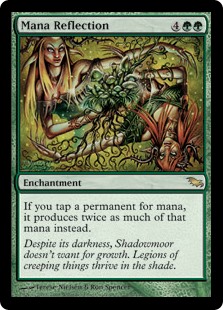
The only caveat is that English copies were far less common than Japanese ones. Chalking that up to the region was easy. After all, it was Japan. Why wouldn’t most of the cards be in Japanese?
Literature uses foreshadowing to tip off the reader as to events to come. Life does, too, though identifying the passages is considerably more challenging.
On my return I had, among other things, 27 JP* Mana Reflections, each acquired at $7.25, and 37 JP Black Markets, at under $3 each. How could you not love those prices? Over on TCGplayer, Mana Reflections were $17 or more at the time, and Black Markets were easily $10. When I found a store with 37 Black Markets in stock at that price, I think I actually made the cash register sound in my head. I snagged a few English copies of both of those as well, though far fewer.
*Use ‘JP’ when shorthanding Japanese, not ‘Jap.’ The latter developed into a slur in the era of World War II.
At the time of my return, TCGplayer hadn’t yet installed the infrastructure for selling foreign cards. I sold one or two JP casual/EDH cards through a private board, and listed a few on eBay that didn’t see any action. I mostly waited, knowing that the foreign card sales on TCGplayer were coming in the near future. While sales at the start were slow, that was mostly an issue of being unable to reach my target market. Once I was able to connect with that huge casual segment, I was going to plow through this huge stack of sweet Japanese EDH and casual cards, perhaps even at better-than-English prices. After all, Japanese is more desirable than English.
This time, I’m the one doing the foreshadowing.
When foreign functionality was added to TCGplayer a month or two later, everything I had went up at 10 to 20 percent more than their English counterparts. In fact, I was one of the first to add foreign versions of many cards. Now I just had to wait for the money to start rolling in. Each morning I awoke eagerly to check the Gmail notification on my phone, anticipating a deluge of orders.
…
Alright, so it wasn’t moving that fast. In fact, in the first month, I didn’t sell a single copy of either Reflection or Market. I kept lowering prices on the Japanese copies closer and closer to the English low, without success. Eventually I had Japanese copies cheaper than English ones. You know what happened?
My English copies, which cost more than the Japanese copies, sold first. Welp.
Language Barrier
We’ve been fed this idea that foreign language cards are preferable. We enjoy tossing around price tags for foil Russian Emrakul and its ilk. There’s a stated knowledge that Korean, Japanese, and Russian cards are worth more than any of the other languages. Foils particularly so, but even the non-foils are generally worth some percentage more.
It turns out that isn’t exactly true. First of all, in all my Magic dealings over the last several years, the only time foreign cards spark interest is when they’re foil. Yes, foil JP stuff people are interested in. Non-foil JP product, though, even format staples, typically elicit a, “You don’t have any English copies, do you?” from people.They’ll take the Japanese or Russian Spellskite, but it’s not their first choice. And these are competitive staples: cards players need any legal copy of for competitive play.
Here’s the issue. A guy trading for a Spellskite is using it in a tournament setting. Everyone in that room knows what Spellskite does. The owner of the card doesn’t care what it looks like. He’s not going to be reading it, and neither is his playgroup. Casual players, though? They actually read the cards.
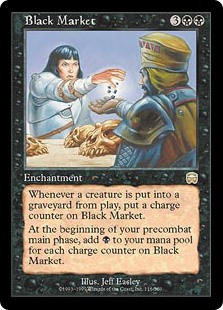
This is a rather alien concept to most of us. How often do you need to actually read a card outside of a new Limited environment? Maybe occasionally you’ll pick up Norin the Wary just to ensure you understand it, or double check the wording on Cryptic Command, but for the most part, you’ve memorized nearly all the cards you regularly come in contact with.
Casual players, on the other hand, don’t have an encyclopedic knowledge of most Magic. Hence, “casual.” And even if they know what Mana Reflection does, it doesn’t mean everyone at their table will. Mana Reflection is fairly simple, too. Black Market is far more wordy. “At the beginning of your precombat main phase” is going to require some real parsing for guys with Consuming Aberration in their decks. Cards in foreign languages make it difficult for players to understand both their own cards and each other’s cards.
Being able to read one’s own cards is important to casual types. You know what they don’t care about much? Visual flair. Many casual players not only don’t find foils more appealing, they actively dislike them. Check out Consuming Aberration. There’s only a 60-cent gap between non-foils and foils, or roughly a 20-percent markup. That’s an obscenely low markup, simply because the interested market for Aberration doesn’t care for foils. Casually oriented players play Magic to have fun. Excitement comes from finding a new card for a deck they never knew existed, not from finally replacing a FTV Ulamog, the Infinite Gyre with a pack foil Rise of the Eldrazi copy.
And so my non-foil Japanese casual cards sat. And sit. I’ve managed to get rid of a few so far. I’ve sold four JP Reflections on TCGplayer since January, all within the last month. Two JP Markets. There’s still plenty to go.
I’ve looked for elsewhere to out them, as I’m deathly afraid of reprints. Cards like Tarmogoyf do just fine with second and third copies. Casual cards, not so much. I did manage to sell a handful of each at GP Vegas. I carried around a copy of Reflection and Market from booth to booth. I’d ask dealers how much they were paying for each. Most told me they didn’t want either, and more still would offer numbers that had me taking deep losses. There were at least a few that bit, thankfully. They’d offer $13 on the JP Reflection, and I’d ask how many playsets they wanted. I’d get looks.
Buylists are an option, too. SCG is paying $7 on JP Reflections and $5 on Markets. That’s a loss on the Reflections, and a fairly minimal profit on the Markets. I still need to do more homework on buylists that want foreign cards. I’ve heard ABU is good for it, though I haven’t checked myself. I’m dragging my feet on this and I’m quite literally going to pay for it if I don’t hurry up.
There are two pages in my trade binder: one at the front of the green section, the other at the front of black. A sheet of nine Reflections and Markets respectively. The only times I’ve managed to trade out of either page, it was for the English copy I had in the middle so players would know what the card does.
Leftovers
Here I sit, with piles of JP Mana Reflection and Black Market still in hand, fearing a reprint, with no good place to sell them. I’ve got others, too, though nothing I’m so deep on. Some Darksteel Plates, some Akroma’s Memorials. They’re cards intended for casual and EDH markets, except that casual and EDH players don’t want them. Remember that foreshadowing I mentioned earlier about how the stores had very few English copies of this stuff, but plenty of Japanese? Well, this is why. Even the market that supposedly wants them doesn’t want them.
The lesson here, which I’ve taken an incredibly long path to get to, is to stay the hell away from non-foil foreign cards unless you know damn well what you’re going to do with them. “Put them on TCGplayer” isn’t an option, either. Don’t buy this stuff unless you can plainly see a buylist that makes flipping the cards worth it, or someone has already promised to take copies off your hands. When you’re browsing foreign sites, prices on these can be awfully alluring—trust me, I get it—but at the end of the day, you may find yourself with plenty of profit on paper yet a wallet that remains oddly light.
